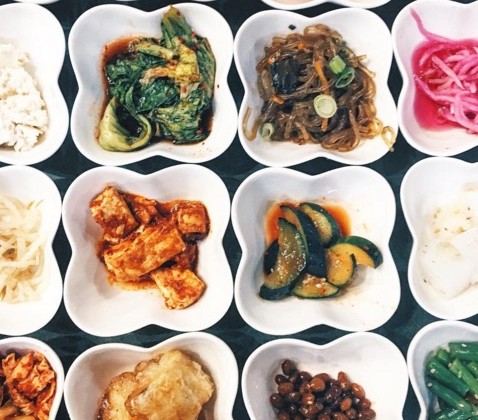1. Attend a hoesik.
Hoesik literally translates to “dinner with co-workers.” If you live and work in Korea, chances are you’ve had no choice but to attend one. There’s no better way to immerse yourself into Korean food-and-drink culture than having locals guide you through the course of a four-hour-long dinner. You’ll feast on loads of banchan, Korean tapas ranging from fiery kimchi to fresh bean sprouts, soy sauce-simmered dobu (tofu) and savory pajeon (green onion pancake). You’ll learn the art of grilling the juiciest samgyeopsal (Korean barbecue) and find there’s no limit to soju shots if an elder insists you take seven of them. Each hoesik is different depending on the workplace, so soju may be substituted for soda and after-dinner entertainment can be as tame as a latte at a café or as wild as an obligatory all-nighter at the nearest norebang. Two things are certain: your legs will fall asleep over and over again from sitting on the floor and you’ll eat something you’ve never seen before.
